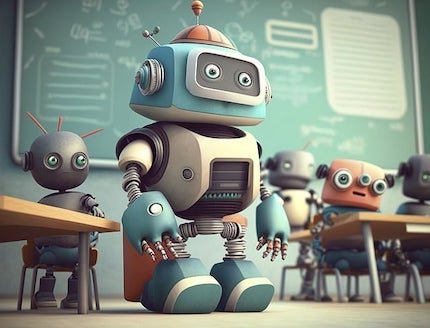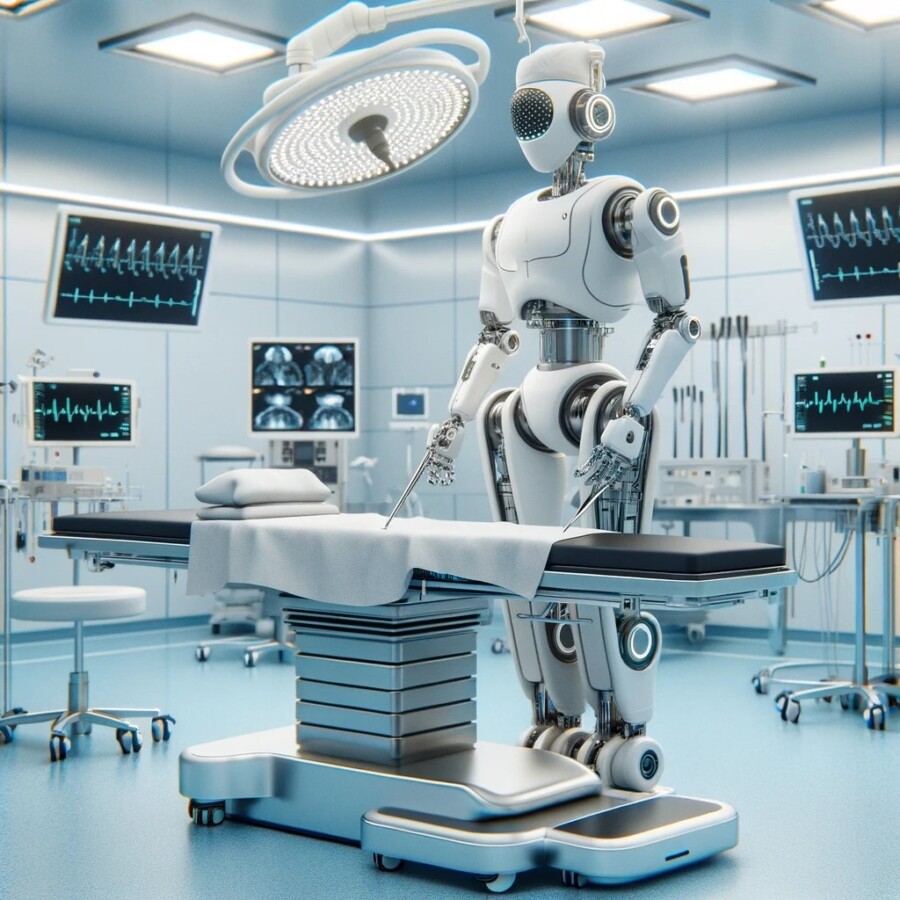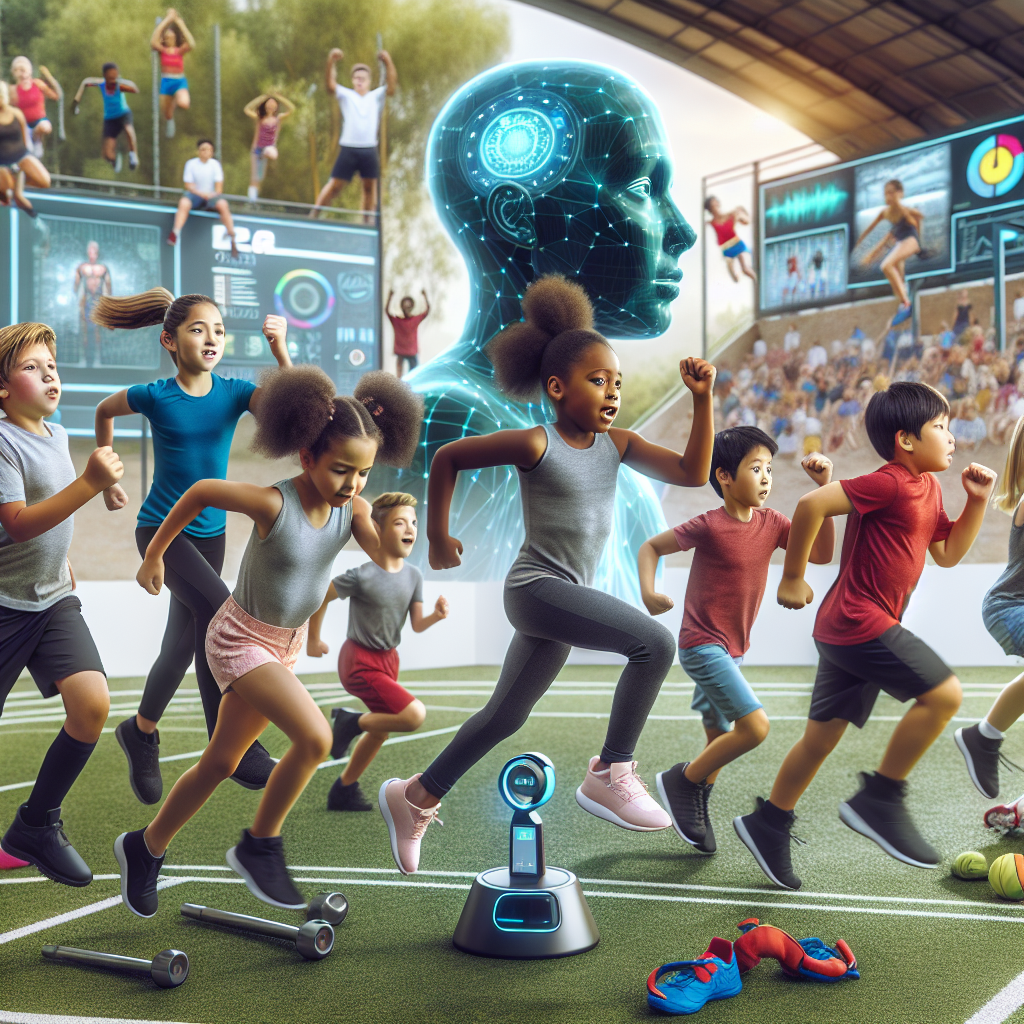Amazon is testing humanoid robots in its US warehouses as part of its ongoing efforts to automate its operations. The company claims that this move is aimed at “freeing employees up to better deliver for our customers.” The robot being tested is called Digit and it has arms and legs, allowing it to move, grasp, and handle items like a human. However, a trade union has criticized Amazon for treating its workers like robots and believes that automation will lead to job losses. Amazon, on the other hand, argues that its robotics systems have actually created hundreds of thousands of new jobs within the company.
According to Amazon, it currently has over 750,000 robots working collaboratively with human staff, primarily performing repetitive tasks. The company states that these robots have helped to create 700 new job types in skilled roles that did not exist before. Amazon Robotics’ chief technologist, Tye Brady, emphasized the importance of human workers in the fulfillment process and dismissed the idea of fully-automated warehouses in the future.
The humanoid robot Digit is designed to walk on two legs and has arms capable of picking up and moving packages, containers, and customer orders. Scott Dresser of Amazon Robotics explained that this design allows the robot to navigate steps and stairs within the facility. However, he clarified that the trial is primarily focused on ensuring the safe interaction between the robot and human employees.
Amazon has been increasing its use of robots in recent years to cut costs. It has already introduced wheeled robots for moving goods within its warehouses and has started using drones for delivery in certain areas. Despite concerns about job displacement, Amazon argues that these new technologies actually create jobs and enable the company to grow and expand.
Original news source: Amazon trials humanoid robots to ‘free up’ staff (BBC)
Listen
Slow
Normal
Fast
Group or Classroom Activities
Warm-up Activities:
– News Summary
Instructions: Have students read the article individually or in pairs. Then, ask them to write a summary of the main points of the article in 3-4 sentences. Afterward, have them share their summaries with the class and compare their answers.
– Opinion Poll
Instructions: Divide the class into pairs or small groups. Ask students to discuss their opinions on the use of robots in Amazon warehouses. Have them consider the advantages and disadvantages, job implications, and potential impact on customer experience. After the discussion, conduct a class poll to see which opinions are the most common and have a class discussion about the results.
– Sketch It
Instructions: Provide each student with a blank piece of paper and a pen or pencil. Ask them to choose a scene or scenario from the article and sketch it out. Once everyone has finished, have students share their sketches with a partner and explain what scene they chose and why. Then, have pairs share their sketches with the class and discuss the different interpretations and perspectives.
– Headline Creation
Instructions: Instruct students to create a catchy headline for the article. Encourage them to be creative and think about how to summarize the main point of the article in just a few words. Afterward, have students share their headlines with the class and discuss the different approaches and strategies used.
– Pros and Cons
Instructions: Divide the class into two groups: one in favor of the increased use of robots in Amazon warehouses and one against it. Ask each group to brainstorm the pros and cons of their respective positions. Afterward, have a debate where each group presents their arguments and counters the arguments of the other group. Encourage students to use evidence from the article to support their claims.
Comprehension Questions:
1. What is the purpose of Amazon testing humanoid robots in its warehouses?
2. What is the name of the robot being tested by Amazon?
3. How does the trade union feel about Amazon’s use of automation?
4. What does Amazon claim about the impact of its robotics systems on job creation?
5. How many robots does Amazon currently have working with human staff?
6. What types of tasks do the robots primarily perform in Amazon’s warehouses?
7. What is the purpose of the trial with the humanoid robot Digit?
8. Why has Amazon been increasing its use of robots in recent years?
Go to answers ⇩
Listen and Fill in the Gaps:
Amazon is testing humanoid (1)______s in its US warehouses as part of its ongoing efforts to automate its operations. The company claims that this move is aimed at “freeing employees up to better deliver for our customers.” The robot being tested is called Digit and it has arms and legs, allowing it to move, grasp, and handle (3)______ like a human. However, a trade union has criticized Amazon for treating its workers like (2)______ and believes that (4)______ will lead to job losses. Amazon, on the other hand, argues that its (5)______ systems have actually created hundreds of thousands of new jobs within the (6)______.
According to Amazon, it currently has over 750,000 robots (7)______ collaboratively with human staff, primarily performing repetitive tasks. The company states that these robots have helped to create 700 new job (8)______ in skilled roles that did not exist before. Amazon Robotics’ chief technologist, Tye Brady, emphasized the importance of human workers in the fulfillment process and dismissed the idea of fully-automated warehouses in the future.
The humanoid robot Digit is (9)______ed to walk on two legs and has arms capable of (10)______ up and moving packages, (11)______, and customer (12)______. Scott Dresser of Amazon Robotics explained that this design allows the robot to navigate steps and stairs within the facility. However, he clarified that the trial is primarily focused on ensuring the safe interaction between the robot and human employees.
Amazon has been increasing its use of robots in recent years to cut costs. It has already introduced wheeled robots for moving goods within its warehouses and has (13)______ using (14)______ for delivery in certain areas. Despite concerns about job displacement, Amazon (15)______ that these new technologies actually (16)______ jobs and enable the company to grow and expand.
Go to answers ⇩
Discussion Questions:
Students can ask a partner these questions, or discuss them as a group.
1. What is your opinion on Amazon’s use of humanoid robots in its warehouses?
2. How would you feel if your job was replaced by a robot?
3. Do you think automation will lead to job losses in the future? Why or why not?
4. What do you think are the advantages of using robots in warehouses?
5. How do you think the introduction of robots in warehouses will affect the overall efficiency of operations?
6. Do you believe that robots can completely replace human workers in the fulfillment process? Why or why not?
7. What is the role of human workers in a fully-automated warehouse, in your opinion?
8. How do you think the use of robots in warehouses will impact the quality of customer service?
9. Do you think the use of robots in warehouses will lead to a decrease in human interaction? Why or why not?
10. How do you think the introduction of robots in warehouses will affect the physical safety of human employees?
11. What are some potential ethical concerns that arise from the use of humanoid robots in the workplace?
12. Do you think the use of robots in warehouses will lead to a decrease in job satisfaction among human employees? Why or why not?
13. How do you think the use of robots in warehouses will impact the overall job market?
14. What are some potential benefits of using robots in warehouses for the employees themselves?
15. How do you think the use of robots in warehouses will affect the future of work?
Individual Activities
Vocabulary Meanings:
Match each word to its meaning.
Words:
1. Amazon
2. humanoid
3. automate
4. robot
5. job
6. warehouse
7. staff
8. technology
Meanings:
(a) A type of robot that resembles a human
(b) The people who work for a company or organization
(c) The company testing humanoid robots in warehouses
(d) A building used for storing goods
(e) Work or employment
(f) The use of scientific knowledge for practical purposes
(g) To use technology to control and operate something
(h) A machine that can perform tasks automatically
Go to answers ⇩
Multiple Choice Questions:
1. What is the purpose of Amazon testing humanoid robots in its US warehouses?
(a) To automate its operations and free up employees
(b) To replace human workers with robots
(c) To create new job types within the company
(d) To cut costs and increase efficiency
2. What is the name of the humanoid robot being tested by Amazon?
(a) Robotron
(b) Automatron
(c) RoboTech
(d) Digit
3. How many robots does Amazon currently have working with human staff?
(a) 500,000
(b) Over 750,000
(c) 1 million
(d) 250,000
4. According to Amazon, how many new job types have been created by their robotics systems?
(a) 1,000
(b) 700
(c) 500
(d) 1,200
5. What is the role of Amazon Robotics’ chief technologist, Tye Brady?
(a) To advocate for fully-automated warehouses in the future
(b) To develop new robotic technologies for Amazon
(c) To emphasize the importance of human workers in the fulfillment process
(d) To oversee the implementation of robots in Amazon warehouses
6. What can the humanoid robot Digit do?
(a) Fly and deliver packages
(b) Speak multiple languages
(c) Cook and clean
(d) Move, grasp, and handle items like a human
7. What is one concern raised by a trade union about Amazon’s use of robots?
(a) Creating job losses
(b) Increasing costs for the company
(c) Treating workers like robots
(d) Decreasing efficiency in warehouses
8. How does Amazon argue that their use of robots and new technologies benefit the company?
(a) By creating jobs and enabling growth and expansion
(b) By reducing costs and increasing efficiency
(c) By replacing human workers with robots
(d) By improving customer satisfaction and delivery speed
Go to answers ⇩
True or False Questions:
1. Amazon disputes that its robotics systems have created hundreds of thousands of new jobs within the company.
2. Amazon denies that the use of robots is aimed at freeing up employees to better serve customers.
3. A trade union has criticized Amazon for treating its workers like robots.
4. Amazon is testing humanoid robots in its US warehouses.
5. The trial with the humanoid robot Digit is not focused on ensuring safe interaction between the robot and human employees.
6. Amazon currently does not have over 750,000 robots working collaboratively with human staff.
7. The robot being tested is called Digit and has arms and legs.
8. Amazon Robotics’ chief technologist dismisses the idea of fully-automated warehouses in the future.
Go to answers ⇩
Write a Summary:
Write a summary of this news article in two sentences.
Check your writing now with the best free AI for English writing!
Writing Questions:
Answer the following questions. Write as much as you can for each answer.
Check your answers with our free English writing assistant!
1. What is the purpose of Amazon testing humanoid robots in its US warehouses?
2. How does Amazon argue that its use of robotics has created new jobs within the company?
3. What is the name of the humanoid robot being tested by Amazon?
4. What tasks is the humanoid robot Digit capable of performing?
5. How does Amazon believe that its use of robots and new technologies enables the company to grow and expand?
Answers
Comprehension Question Answers:
1. The purpose of Amazon testing humanoid robots in its warehouses is to automate its operations and free up employees to better serve customers.
2. The robot being tested by Amazon is called Digit.
3. The trade union criticizes Amazon for treating its workers like robots and believes that automation will lead to job losses.
4. Amazon claims that its robotics systems have created hundreds of thousands of new jobs within the company.
5. Amazon currently has over 750,000 robots working with human staff.
6. The robots primarily perform repetitive tasks in Amazon’s warehouses.
7. The purpose of the trial with the humanoid robot Digit is to ensure the safe interaction between the robot and human employees.
8. Amazon has been increasing its use of robots in recent years to cut costs and improve efficiency.
Go back to questions ⇧
Listen and Fill in the Gaps Answers:
(1) robot
(2) robots
(3) items
(4) automation
(5) robotics
(6) company
(7) working
(8) types
(9) design
(10) picking
(11) containers
(12) orders
(13) started
(14) drones
(15) argues
(16) create
Go back to questions ⇧
Vocabulary Meanings Answers:
1. Amazon
Answer: (c) The company testing humanoid robots in warehouses
2. humanoid
Answer: (a) A type of robot that resembles a human
3. automate
Answer: (g) To use technology to control and operate something
4. robot
Answer: (h) A machine that can perform tasks automatically
5. job
Answer: (e) Work or employment
6. warehouse
Answer: (d) A building used for storing goods
7. staff
Answer: (b) The people who work for a company or organization
8. technology
Answer: (f) The use of scientific knowledge for practical purposes
Go back to questions ⇧
Multiple Choice Answers:
1. What is the purpose of Amazon testing humanoid robots in its US warehouses?
Answer: (a) To automate its operations and free up employees
2. What is the name of the humanoid robot being tested by Amazon?
Answer: (d) Digit
3. How many robots does Amazon currently have working with human staff?
Answer: (b) Over 750,000
4. According to Amazon, how many new job types have been created by their robotics systems?
Answer: (b) 700
5. What is the role of Amazon Robotics’ chief technologist, Tye Brady?
Answer: (c) To emphasize the importance of human workers in the fulfillment process
6. What can the humanoid robot Digit do?
Answer: (d) Move, grasp, and handle items like a human
7. What is one concern raised by a trade union about Amazon’s use of robots?
Answer: (c) Treating workers like robots
8. How does Amazon argue that their use of robots and new technologies benefit the company?
Answer: (a) By creating jobs and enabling growth and expansion
Go back to questions ⇧
True or False Answers:
1. Amazon disputes that its robotics systems have created hundreds of thousands of new jobs within the company. (Answer: False)
2. Amazon denies that the use of robots is aimed at freeing up employees to better serve customers. (Answer: False)
3. A trade union has criticized Amazon for treating its workers like robots. (Answer: True)
4. Amazon is testing humanoid robots in its US warehouses. (Answer: True)
5. The trial with the humanoid robot Digit is not focused on ensuring safe interaction between the robot and human employees. (Answer: False)
6. Amazon currently does not have over 750,000 robots working collaboratively with human staff. (Answer: False)
7. The robot being tested is called Digit and has arms and legs. (Answer: True)
8. Amazon Robotics’ chief technologist dismisses the idea of fully-automated warehouses in the future. (Answer: True)
Go back to questions ⇧













